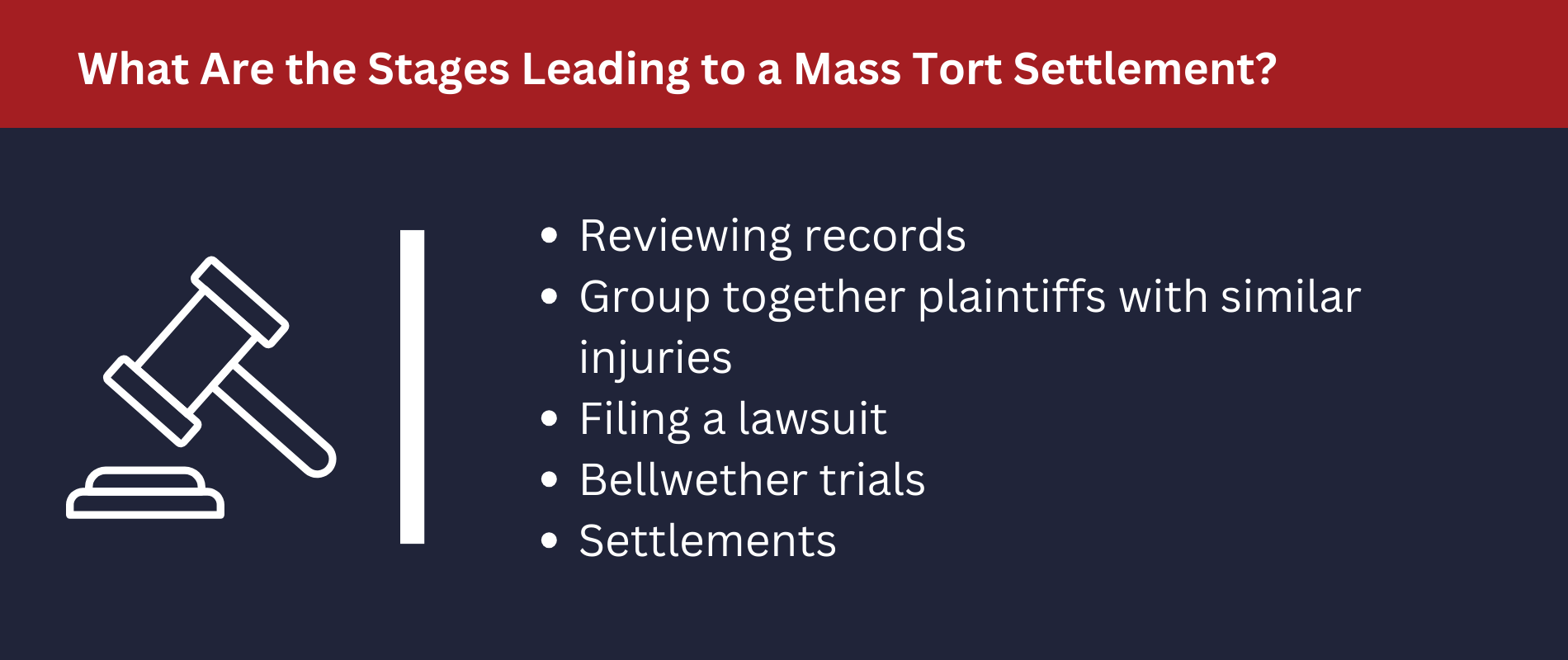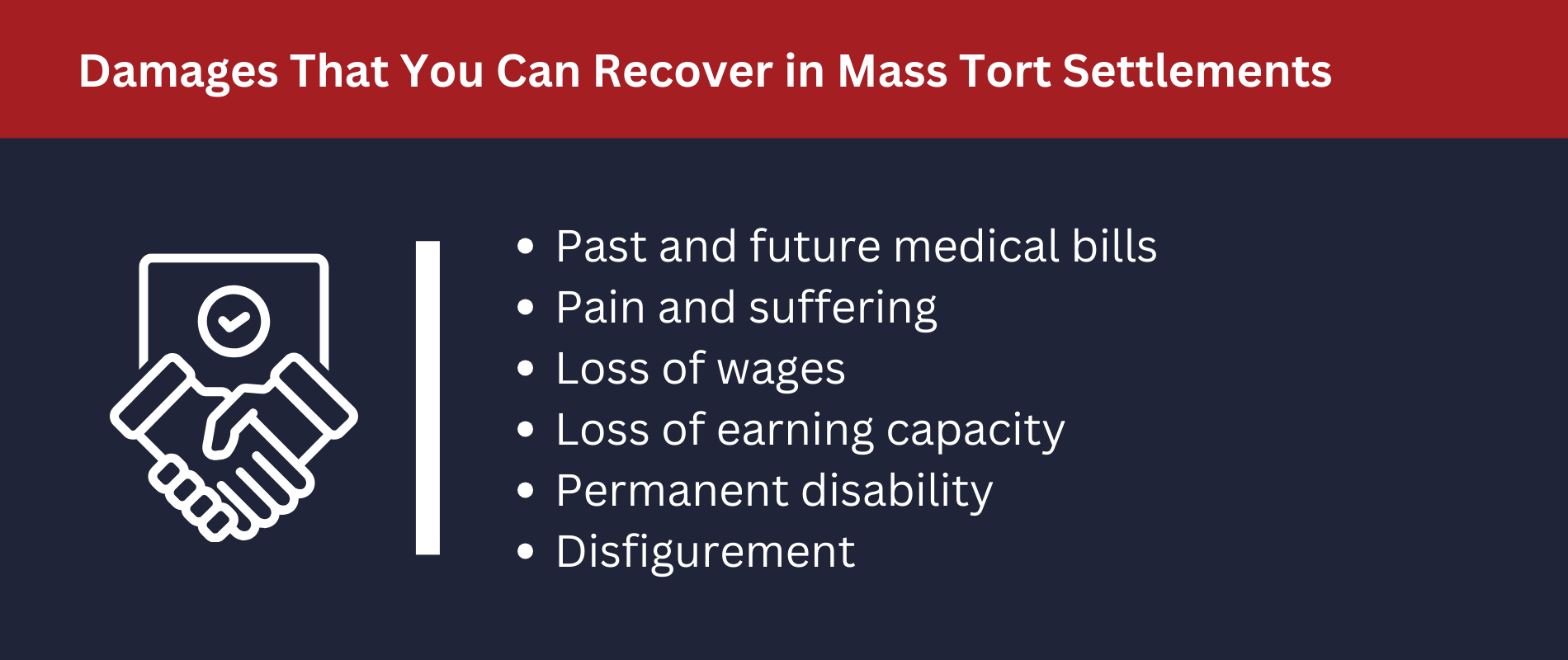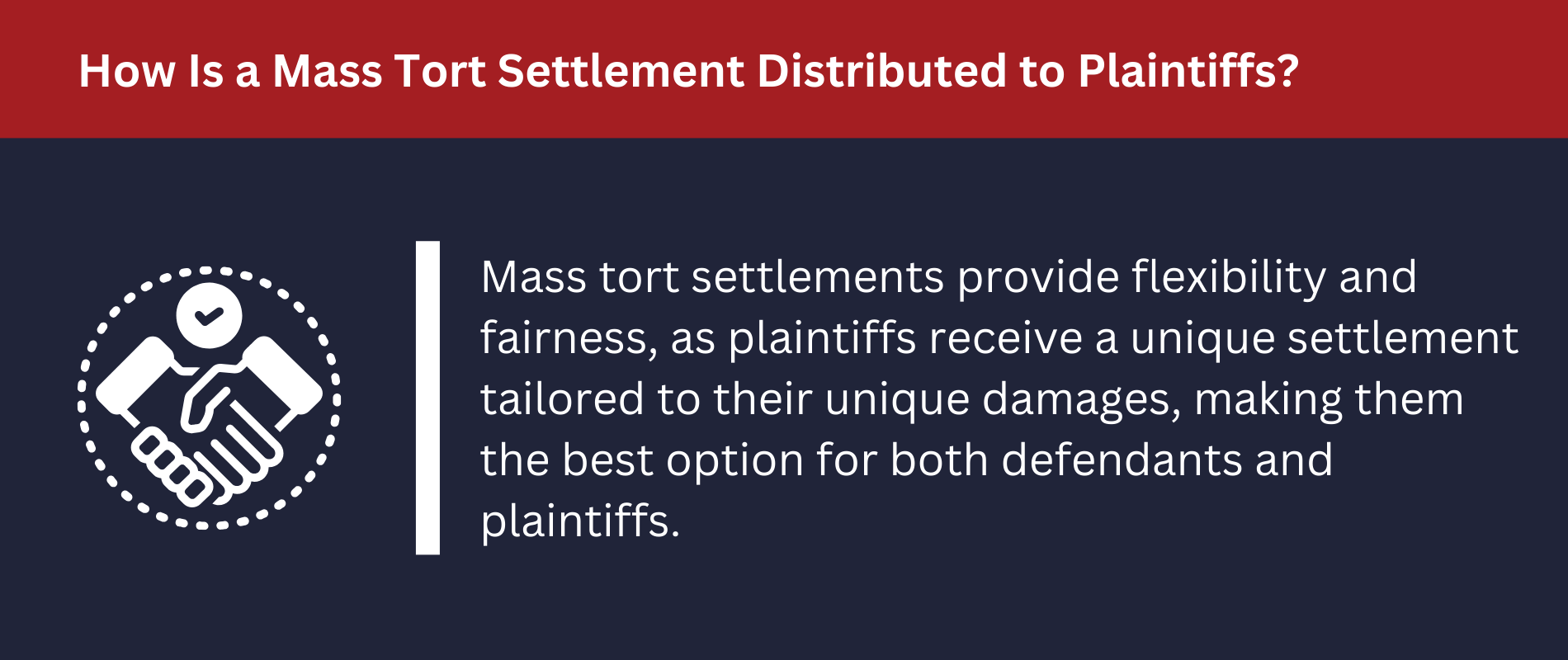
Mass tort cases lead to practical, obvious questions about how mass tort settlements are distributed since these cases involve large numbers of plaintiffs. It helps to first understand what a tort is.
Torts are civil lawsuits against parties who injured plaintiffs. This can include intentional acts which harm plaintiffs. However, many torts occur due to negligence, or unintentional acts which injure.
Oftentimes, a lone defendant might be responsible for numerous injuries, like with defective products such as paraquat.
In these cases, injured parties might file individual personal injury claims, and these claims might end up being consolidated into a mass tort composed of multiple individual torts. For example, if a defective medical device, such as a Philips CPAP machine, injures many different people, their individual torts might be consolidated into a mass tort.

There are five stages leading to a mass tort settlement:
1. Reviewing records: A mass tort attorney will review various records to figure out if you have a case. The lawyer will review statements by plaintiffs, accusations of injuries, and long medical histories to determine if your injury claims are accurate and if you possess a pre-existing condition.
The mass tort attorney needs to find consistency in your medical records and find similar cases to yours if, for example, you allege a defective medical device injured you.
2. Group together plaintiffs with similar injuries: An attorney then needs to find multiple people who allege that a certain product or drug caused them to suffer similar injuries. The mass tort attorney must gather all of these individuals’ evidence in order to build a single case against a defendant.
Each person will have a unique claim based on their injury severity, but the lawsuit’s structure will be similar. Plaintiffs showing a different pattern leading to their injury won’t be eligible for financial compensation in the mass tort.
3. Filing a lawsuit: Mass tort lawsuits are always filed in state courts. It’s best to file all the plaintiffs’ lawsuits together, even though the plaintiffs might live in various areas of the state. The mass tort cases are tried in court with experienced lawyers who understand mass tort cases’ structure and the procedures involved in filing the cases. Courts prefer mass tort cases to be combined for speed, efficiency, and convenience.
4. Bellwether trials: Bellwether trials precede mass tort lawsuits. In these trials, lawyers try multiple cases against the same defendant. Attorneys will choose the most significant cases, like cases involving deaths or catastrophic damages from drugs or defective products.
These trials are test runs for lawyers. Bellwether trials help attorneys figure out how future cases will end up. When these cases are ruled in favor of the defense, the rest of the mass tort cases won’t end up going to trial. For this reason, it’s important for mass tort lawyers to give these cases everything they’ve got.
5. Settlements: There is no one-size-fits-all answer to how long mass tort cases will take to settle. Most mass torts end in settlements. However, it can take months or even years before settlement occurs. Mass tort cases are time-consuming and expensive, and appeals can happen when they’re over. Mass tort attorneys typically prefer to settle mass tort claims out of court.

Mass tort cases are essentially a collection of personal injury cases. Every plaintiff makes their own claim for damages. Certain plaintiffs might ask for $20,000, whereas other plaintiffs may ask for $500,000, depending on each plaintiff’s injuries.
Mass tort cases typically involve a ton of damages, so it’s imperative you hire expert, experienced mass tort lawyers like the ones at Nadrich Accident Injury Lawyers. You need lawyers who know what they are doing with the stakes so high. You can’t afford to hire a lawyer with no mass tort experience. You need an expert in mass tort cases.
Damages that you can recover in mass tort settlements include:
• Past and future medical bills
• Pain and suffering
• Loss of wages
• Loss of earning capacity
• Permanent disability
• Disfigurement
In a mass tort settlement, defendants agree to pay plaintiffs a specific amount of money in order for the lawsuit to be dismissed. Judgments are decisions made by juries or judges after trials. Damages are awarded by juries to plaintiffs when juries rule in favor of plaintiffs.
Claims in mass torts are also often paid via individual settlement. A settlement is an agreement between defendants and plaintiffs which is made out of court. Settlements may be agreed upon after or before lawsuits are filed.

Plaintiffs don’t split the financial compensation they obtain when mass tort settlements are agreed upon. Every plaintiff receives a unique settlement depending on the unique damages they suffered. Thus, every plaintiff’s settlement is tailored to their own circumstances and needs.
Mass tort settlements aren’t always the same, but they provide flexibility and fairness that jury verdicts do not. Because of this, the best option for defendants and plaintiffs alike is often a mass tort settlement.
Contact an Experienced Mass Tort Attorney at Nadrich Accident Injury Lawyers
If you think you are eligible to file a mass tort lawsuit after being injured by a drug or medication, contact experienced mass tort lawyers like those at Nadrich Accident Injury Lawyers today. A mass tort attorney can assist you in gathering evidence to build a strong case and obtain all the financial compensation you deserve in a settlement.

